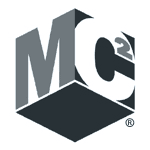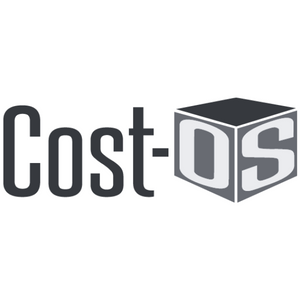It's Time to Join the Information Revolution
This article was written by Andy Gerlach, Technical Services Manager at Snyder Langston, and published in the January-February 2017 issue of Design Cost Data Magazine.
The information revolution – like the agricultural and industrial revolutions before it – is freeing up human energy by creating a more efficient construction process with less waste. In this era of technological innovation, our industry’s talent is rapidly developing the skills to design and build fantastic buildings, in less time, with less money, and of better quality.

However, change doesn’t happen in a vacuum. Technology can shift the way we do business only if accompanied by large shifts in processes, infrastructure, and business relationships. To free up time and energy in the future, we must make a significant investment in time and energy now.
At the firm Snyder Langston, we view this investment as building on our tradition of being a Trusted Advisor and Master Builder to our clients. The first step in our strategy is to implement the right estimating software across the enterprise so we can create more accurate estimates in less time. We’re also working to leverage our relationships with subcontractors by seeking a common language that reduces the internal risk and time involved in traditional design-bid-build. Additionally, we’re evolving the idea of “cost” by harnessing big data to create a “cycle of cost” approach that encompasses the conceptual estimate to contract to actual costs and back to cost database. See cycle of cost to the right.
Time for Change
In 2012, I transitioned from the field to the office at Snyder Langston, with a goal of infusing technology into our estimating department. Having seen the benefits and possibilities of technology in the field, I was eager to put a new spin on estimating and saw a great opportunity to help move the industry forward.
I saw how technology could give us a better way to do business and was interested in BIM as a starting point. But I wanted more than just “Hollywood BIM” (a BIM that looks flashy but doesn’t really help the bottom line). My question was, “How could we leverage 3D models to provide faster, more accurate estimates, and be more responsive to our clients’ needs?”
Because Snyder Langston’s business plan relies on early involvement with clients and architects, conceptual estimating was a natural starting point. We like to work early with clients and architects and facilitate a discussion on design and cost. We found that DESTINI Profiler by Beck Technology was well-suited to help us achieve this, and three years later, there’s still nothing else like it on the market.
DESTINI Profiler became our core software, and the time required to provide a conceptual estimate was cut from days to hours. Our ability to organize the cost and work through various design options has improved the quality of our client service. Speeding up the conceptual estimating process makes a marked difference in our efficiency, which translates into a difference in the bottom line.
With this new tool in the hands of experienced team members, not only is preconstruction estimating more accurate, but we also have a new and better way to communicate with clients.
To us, exceptional customer service means giving clients options and letting them choose what’s best for their business or project. The combination of 3D modeling and reliable cost data, delivered faster than ever before, gives our clients the information they need to make better decisions earlier in the preconstruction process, so they can get the deal done and achieve success.
Back to Basics
DESTINI Profiler has been an outstanding tool, but it's only our starting point in our revolution.
What happens once the project evolves past the conceptual stage? How do we better harness actual data to improve our database and ensure we are capturing today’s market? To really move the needle, we needed to do more. So, we invested in the infrastructure updates and changes to our core processes that will connect the power of DESTINI Profiler with potentially game-changing service for our clients.
To excel in our communication with external stakeholders, we needed to remove the internal divisions between
departments and allow critical data to be more accessible. This means back-to-basics thinking and examining the
fundamentals that are critical in our industry: cost codes.
Over the years, Snyder Langston had developed cost codes specific to our company. To facilitate communication between clients, architects, and subcontractors, we’ve now updated our cost codes to be strictly compliant with published industry standards.
We’ve also adopted the UniFormat system of organization, which is fundamental to conceptual estimating. This lets us compare systems in different buildings – such as foundations, superstructure, and floor finishes – regardless of which subcontractor might perform the work.
End-to-End Integration
With our internal language and infrastructure cleaned up, the next task was to select an everyday estimating platform to carry us from the 3D modeling and costing phase through the final estimate, subcontractor buyout, and contract award phases. Based on market research, discussions with industry peers, and past experience with Beck Technology, we chose to implement the DESTINI Estimator product.
The full DESTINI suite integrates the construction process from end to end, so we now have continuity from conceptual estimating all the way through the formal estimate – and beyond.
A single database now drives all estimates, so we’re not reinventing the wheel with every new project. Because our economy is constantly fluctuating, our ability to track recent project cost on a consistent, granular level increases the accuracy of our estimates across the board. We can run variance reports and point to a 3D model to show a client exactly what changed to make that dollar figure change. Seeing is understanding, and understanding is confidence in our work.
Because each new project feeds our cost database, we can now capture the “digital exhaust” associated with every estimate, which makes our database stronger, more current, and more accurate with each project. Even if we don’t win the project, we gain valuable cost information that’s included in our growing database. This only adds to our clients’ confidence in our understanding of the market and its drivers.
What’s Next?
Our vision for the future of preconstruction is a more collaborative and seamless process that connects general contractors with architects and subcontractors through technology.
As more general contractors begin using 3D modeling in preconstruction estimating, collaboration with architects will strengthen. Progress will come when architects and general contractors build alliances and establish consistent, technology enabled workflows and routines that save time and reduce rework.
GCs can use estimating technologies like DESTINI Profiler to inform and advise architects early in the process, helping to keep the design within budget and prevent “value engineering” of good design on the back end. As these relationships mature, the architect/contractor team model will soon prove more cost-effective than today’s design-bid-build approach.
Greater collaboration with subcontractors will also reduce wasted time and energy. Consider the effort that an estimator spends to manually perform a take-off, multiplied by several trades, then multiplied again by four or five companies per trade. The right technology and close collaboration can make take-off virtually automatic.
While adopting any new approach or technology across an entire organization can be a long, slow haul, these are changes worth making. Just ask your clients. As technology raises the bar for estimating speed and accuracy, they expect and demand increasing precision. We now have tools that make what was previously impossible, possible, along with a new generation of high-energy, tech-friendly workers eager to both teach and learn from our tenured experts.
Until our industry embraces these resources, we are simply standing outside the information revolution, spreadsheet in hand, looking in.

-1.png?width=112&height=112&name=image%20(4)-1.png)














